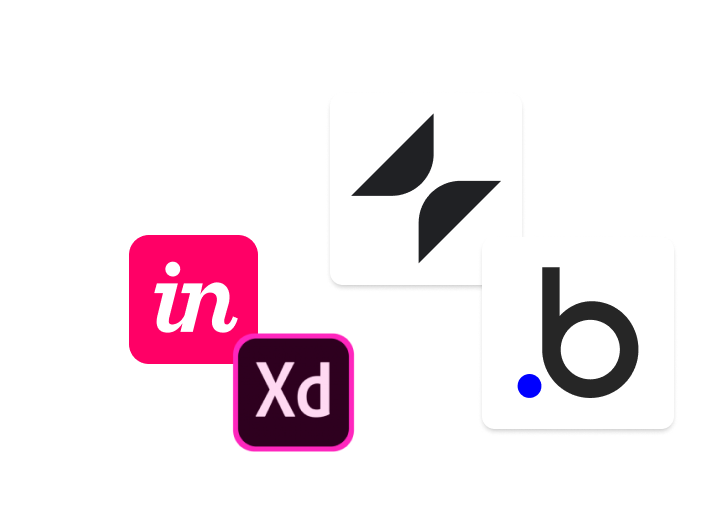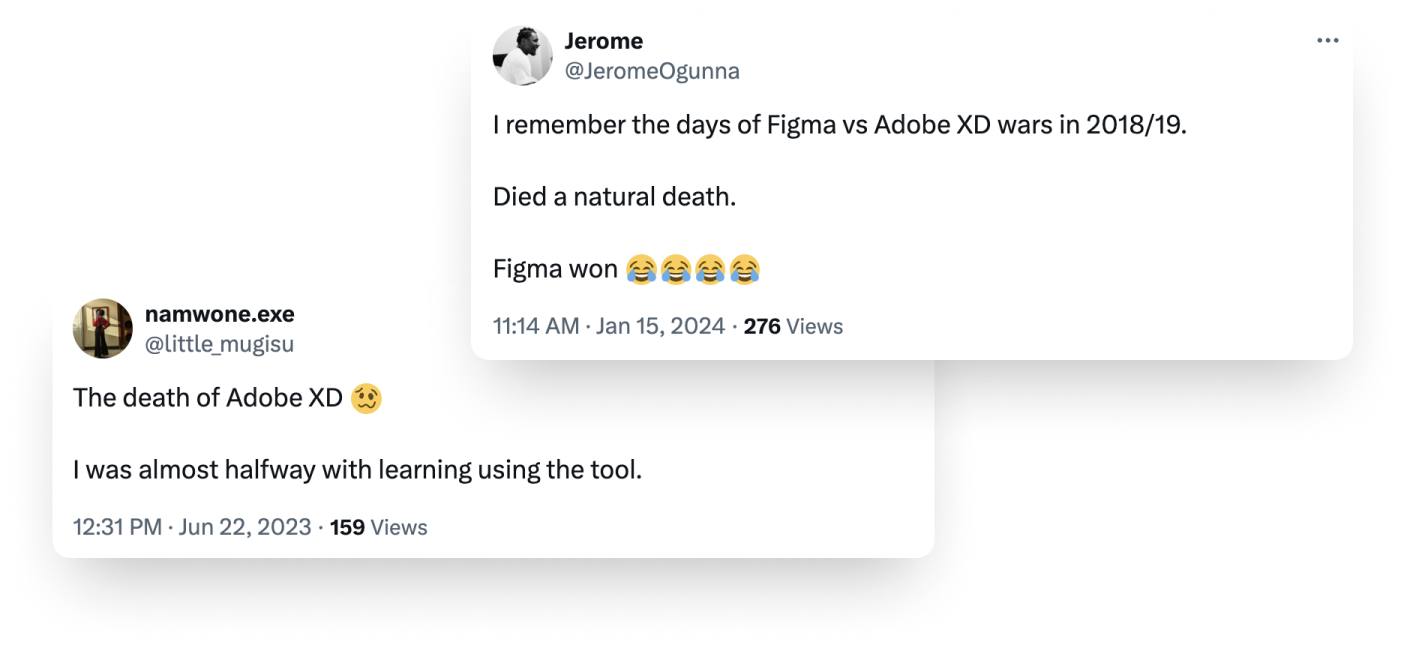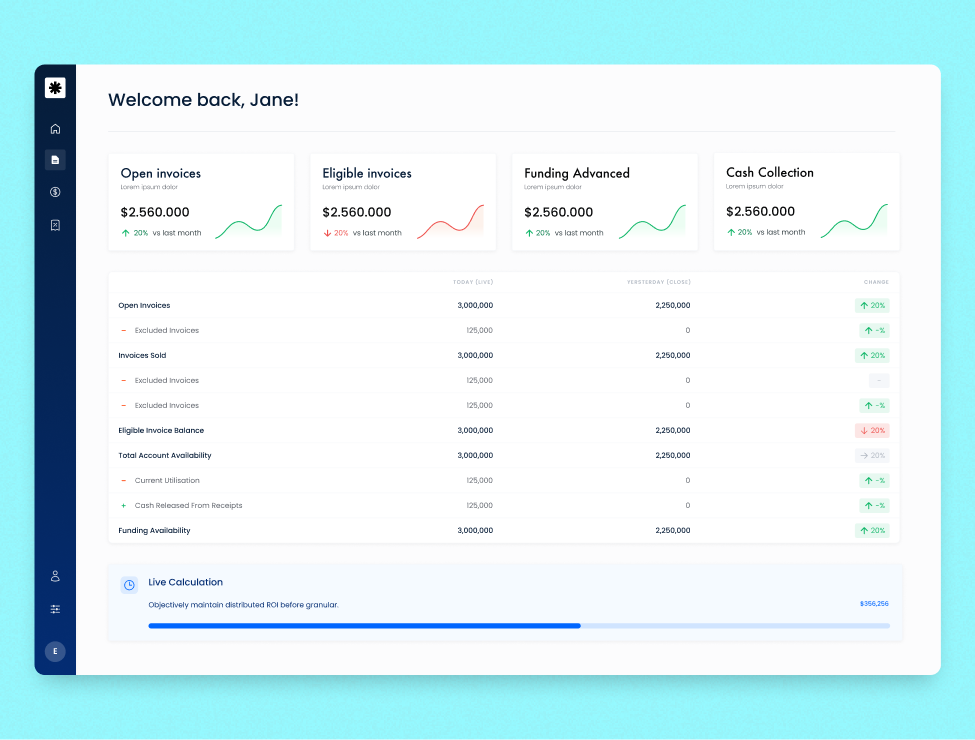Prototyping software is dead. In our opinion, few will miss Adobe XD, InVision or any other such tools. In our eyes, no-code apps like Bubble have accelerated the product-building process to the point that Adobe XD just slows things down. We’ll unpack the reasons why.

In 2023, Adobe decided to shut down its popular design and prototype software, Adobe XD.
And it’s a move that came at exactly the right time.
It follows a striking new trend in the industry. Apart from Adobe XD, InVision has also been killed off with parts of it incorporated into Miro.
That said, we won’t mourn the loss of these tools much.
Why is that?
To us, building complex and interactive prototypes with real data using Bubble is the way of the future.
No-code tools like Bubble, Adalo, and Glide are far more effective than XD or InVision at creating actual prototypes. Given how advanced the technology is, we’re building prototypes and MVPs in record time.
At Tinkso, we’re digital product builders who have worked with both traditional prototyping tools like XD and no-code tools like Bubble.
Let’s walk you through our thinking process on these topics. We’ll cover why XD and InVision were discontinued, as well as how No-Code will replace them.

Before we start, let’s be clear about what we mean when we discuss prototypes, mockups, and wireframes.
Prototypes are a simulation of what an app could look like in action.
Essentially, they give the target user a chance to test various features of the app. Ideally, you want to account for as much functionality in your prototype as possible to make the simulation realistic.
Unfortunately, the issue with many prototypes is that they are low-fidelity, meaning that they don’t actually showcase desired features accurately. That’s the very issue we encounter when we create prototypes in AdobeXD and InVision. It’s also the reason why we prefer to create ultra-high-fidelity prototypes in No-Code, which we’ll explain later.
Generally speaking, design tools like XD, InVision, or even Figma are more suited for the next two options: mockups and wireframes.
Since mockups are static, they are considered a step below prototypes.

They show off the overall design of an application, covering details like graphics and typography. However, there is zero clickability or functionality involved.
You would typically want to present a mockup to key stakeholders to help them understand whether the design aligns with the brand, before moving on to the prototyping stage.
Finally, wireframes are the next step below mockups, they function as the skeleton of the app.

You can think of this as the architect’s blueprint. Wireframes are good for getting to know the specific proportions of an app so that you have an idea of where things stand initially.
Typically, we would use wireframes to present basic structural facts about an app to stakeholders before we proceed to the next stage of design.
So, now that we have some definitions nailed down, let’s go over both the recent Adobe XD and InVision shutdowns.
There are lessons to take away from each of them.
Back in 2023, Adobe announced that it would discontinue Adobe XD. Since then, XD is no longer available for users to download. However, XD will continue to support their existing customers with bug fixes.
When a company as big as Adobe decides to discontinue a product it indicates a shift in their thinking. No doubt, this was the case here. In fact, Adobe tried to acquire Figma, XD’s main competitor, in 2022. After 15 months of regulatory review, the deal fell through as neither party saw a path forward. Now, Adobe XD users are stuck while Figma remains.
While XD isn’t awful at what it does, it leaves much to be desired for design teams. For instance, its real-time collaboration features were quite weak, making Figma a better option since the platform was designed with collaboration in mind.
And as a prototyping tool, Adobe XD only allows you to create clickable “dumb” prototypes without any data or backend connected, there’s no depth to the tool.
In the mid-2010s, InVision was the most popular prototyping tool on the market. But as we said, the disappearance of prototyping tools is a trend. Now, InVision is slated to shut down at the end of 2024.
Considering InVision saw a 50% drop in revenue in 2022, it’s not such a surprise.
The industry scuttlebutt is that InVision took its foot off the gas and stopped upgrading its features at a fast enough pace to keep up with larger competitors like Figma.
There is one bit that will be salvaged following the InVision shutdown. One of InVision’s more popular tools was Freehand, while not a prototyping tool, it’s a great way for teams to brainstorm with its collaborative sketching abilities.
Miro has acquired Freehand to enrich its current collaborative abilities. To us, Miro is a bit far from even being able to be considered a proper prototyping tool, but it’s something to consider if you liked the Freehand aspect of InVision.
Earlier, we indicated that Adobe XD and InVision might not be that great for prototyping.
So, you might be wondering, what happened to mockups and wireframes? Aren’t XD and InVision good for those as well?
Unfortunately, these tools are outflanked from both sides.
On the one hand, if you want to create a simple wireframe or mockup, Figma and Miro are far more collaborative and offer extra features that those old tools didn’t. As we explained earlier, creating wireframes and mockups is extremely collaborative. People are going to choose the mockup tool that makes collaboration easier.
Notice how the only part of InVision that’s getting preserved is a collaborative brainstorming tool? Lesson learned: you need to innovate if you want to stay alive.
Then, on the prototype side of things, neither XD nor InVision can match the expansiveness of a No-Code tool. After all, what other type of tool allows you to visualize your app with real data?
Let’s get into that in more detail.
To us, it’s little surprise that AdobeXD and InVision are going extinct.
In our work, we’ve found that while these tools both yield a clickable prototype, they are extremely limited. We’ve found that building the prototype in Bubble is far more advantageous.
Bubble and similar no-code platforms like Glide, Softr, Retool and WeWeb allow you to create custom apps without needing to code. They work by allowing users to drag and drop different elements that they want and synthesize them into their own app. If you already know what you're doing, this process is almost as fast as creating a prototype in Figma.
However, the most important reason why Bubble and other no-code apps are a good alternative to Figma is because of the backend. With Bubble, you can add a data structure and database to your test app, meaning that you can populate your prototype with real data.
[Image: Image]
It's the difference between having an actual app versus merely presenting an app idea.
Bubble also allows you to integrate 3rd-party databases to leverage your data safely. And along with various custom design options, you can make the app look and perform much more like a real app than any prototype could.
The whole point of a prototype is to test and validate assumptions. If you’re satisfied with the no-code prototype, then that prototype immediately functions as your MVP. Then, you can immediately gather user feedback and begin scaling out other parts of the app too.
So while a prototype from software like AdobeXD might be slightly quicker, it just ends up creating a lot more work for you in the long run. Such prototypes are made to be thrown away. After you finish building a prototype in XD, you still need to actually build the app. And if you use native code, that could take you months. No-Code kills two birds with one stone.
The no-code prototype is a more efficient and high-tech solution for entrepreneurs who want to ship fast, rather than languish in the product development stages for months.
As prototyping tools continue to evaporate, you have to ask yourself if a simple clickable prototype is really worth it.
After all, what’s the point of separating the prototype and the MVP if you can merge them together? Speed is a valid strategy.
At Tinkso, we have experience creating prototypes for both enterprises and small startups. For instance, we used Bubble to create a prototype for a sales app in only 2 weeks. Our client, Steelcase, was able to take the lessons they learned from the prototype and apply them across the entire enterprise.
So, if you’re curious about what the prototyping process looks like with a Bubble app, read the case study in more detail. And if you’re curious about what your own prototype development process could look like, feel free to give us a shout.
Book a short call and let’s explore what we can create together. We’ll help you turn your idea or workflow challenge into a clear, actionable plan, fast.
Start My Project